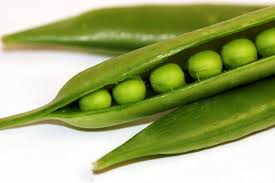September 03, 2009
My Planted 10 Gallon Aquarium
This was all grown using fermented-yeast-and-sugar DIY CO2, though I've since switched over to pressurized CO2 setup with a tank, regulator, pH probe and controller. My lighting is two 5500k 13 watt screw-in compact fluorescent bulbs in the original equipment somewhat funky plastic hood. I use Seachem liquid fertilizers.
The vertebrate population includes one male Platinum Guppy, who shows up as a blur about halfway from top to bottom, almost to the left margin of the tank. Also, five Neon Tetras, three Corydoras trilineatus, one Siamese Algae Eater, and two Badis badis. There were a couple of large pond snails, but I guess they died of old age. No other invertebrates that I know of.
This shot is, so far, the height of my artistry as a planted aquarium geek.
August 18, 2009
Fun with German Guppy Enthusiasts

The fish above is from his most recent blog post, titled "piebald reticulata".
The first link a the forum is this, a thread that shows pictures of Tobi's, the Guppyfocus guy's, fishroom. The last pic in the series is interesting, as Tobi has mentioned a "Channa" that he feeds culled guppies to. It's a nice little planted tank, and I think you can see the snakehead hovering in mid-tank. According to this link, this may be the fish that has been terrorizing anglers in my brother's suburban D.C. area in recent years.
Next, a thread in which a young woman guppy breeder shares a series of shots of a group of male guppies, posing the group a puzzle as to how, genetically, she reached their phenotype, genetics-talk for their appearance.
Finally, here's the forum's "portal" page, pumped through Google Translate.
Wait, there's more! They're like peanuts, I can't stop. Two amazing "Pink Moscow Males". I hope you enjoyed the tour.
May 21, 2009
May 09, 2009
Unstable CO2 Concentration as a Cause of Algae in Planted Aquariums
Unstable CO2
Both plants and algae adapt to CO2 in their environment. To do this, they produces what’s call the Rubisco. The Rubisco is an enzyme that is used for carbon fixation. In a low CO2 environment, plants and algae will produces more Rubisco so they can fix carbon from the KH (-HCO3). When there is plenty of CO2, plants and algae no longer need the Rubisco so they simply get rid of it.
Problems show up when CO2 is unstable because algae are much faster to adapt to low CO2 than plants. So everytime your CO2 is changing, algae have a chance to outcompete the plants.
When I saw the enzyme RuBisCO mentioned, I remembered the first time I heard that word, which was at a meeting of the Atlanta Area Aquarium Association, during member Brian Revennaugh's great presentation on planted aquariums. If you'd been in the room with me, you probably could have seen the light go on over my head. Aha!
I've been a student of aquarium keeping, and especially planted aquariums, my whole life, and it is wonderful to be able to keep learning things about it.
Addendum: Brian R. adds some depth and precision in his post at the AAAA Forum discussion of this topic.
April 17, 2009
Notes on Our Noto/Martynowski/Petz/Shock Family History
I was amazed to hear her say that, as I had somehow assumed that all of my immigrant forbears had arrived in the New World around the same time as my father's Sicilian family, in the early Twentieth Century. I'm guessing, now, that the Petz clan, which my grandmother mentioned was from the Alsace region of Germany, the native land of the Alsatian, or German Shepherd dogs, came to North America as part of the Hessian army of mercenary soldiers that helped England's King George in his futile attempt to retain control of the American colonies. I've not yet heard any word of how they came to be in the Chicago area.
It is interesting that this is also how my wife's father's German ancestors, the Shocks, came to be on this side of the Atlantic. Carla Shock, my mother-in-law, has a copy of a genealogy that tells of three brothers travelling down the Ohio River on a raft, with one, my father-in-law's forbear, getting off around Evansville, Indiana.
January 06, 2009
125 mph...
 I've learned that "It never hurts to ask." I've gotten to drive a 1985 Porsche 911 that was set up for autocrossing with real stiff shocks, springs, and neoprene suspension bushings, a similarly cool old Toyota MR2, a BMW M Coupe (with the big three liter engine from the M3, and big rear tires under some mean fender flares), a recent, brand new BMW 330ci, a five year old BMW 740, a bright red 1999 BMW M3 convertible, and now, this. Life is sweet.
I've learned that "It never hurts to ask." I've gotten to drive a 1985 Porsche 911 that was set up for autocrossing with real stiff shocks, springs, and neoprene suspension bushings, a similarly cool old Toyota MR2, a BMW M Coupe (with the big three liter engine from the M3, and big rear tires under some mean fender flares), a recent, brand new BMW 330ci, a five year old BMW 740, a bright red 1999 BMW M3 convertible, and now, this. Life is sweet. Peas,



